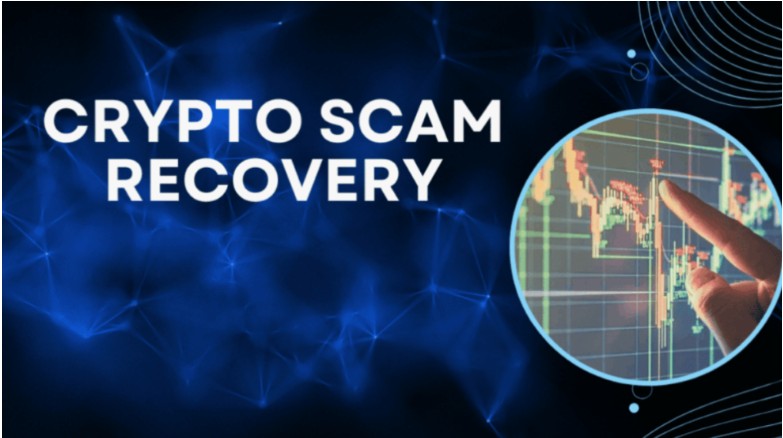I’ve seen how quickly panic sets in when someone discovers they’ve lost crypto to a hack, phishing attack, or outright scam. You want that money back—fast. But understanding what crypto scam recovery services can and can’t deliver is crucial. Let’s break down realistic outcomes versus common misconceptions so you know what to expect when you reach out for help.
Understanding Crypto Scam Recovery Services
Crypto scam recovery services specialize in tracing and pursuing stolen or lost digital assets. They combine blockchain investigation techniques, legal support, and liaison with exchanges to give you the best shot at getting funds back. Legitimate firms use forensic tools to map transaction flows on networks like Bitcoin and Ethereum.
These services become a lifeline if you’ve fallen prey to crypto wallet hacks, phishing attacks, or investment scams promising guaranteed returns. They aren’t miracle workers, though—they can’t reverse transactions on blockchains any more than a bank can reverse a settled check.
You might wonder whether recovery efforts are worth it given the costs. Success rates vary widely—depending on how quickly you act, the amount stolen, and where the funds landed. Firms typically work on a contingency basis, charging a percentage only if they recover funds, so you pay nothing upfront.
What You Can Do With Crypto Scam Recovery Services
Trace Stolen Funds Through Blockchain Investigation
By leveraging blockchain analytics, recovery teams can follow the money trail across multiple addresses. They identify mixers, exchanges, and wallets that hold stolen assets. Advanced tools used by companies like Chainalysis have helped reclaim over $11 billion in illicit funds.
Collaborate with Exchanges and Authorities
Recovery specialists often liaise with crypto exchanges and law enforcement when they detect stolen funds moving through centralized platforms. Freezing accounts on CEXs or securing court orders can lead to partial or full fund recovery.
Recover Lost Access to Wallets
If you’ve lost private keys or passwords to hardware wallets due to device damage or forgotten credentials, some firms offer hardware repair, data extraction, and password cracking services. They can occasionally restore access when nothing else works.
What You Can’t Do With Crypto Scam Recovery Services
Guarantee Full Recovery
No service can promise 100 percent return of stolen funds. Blockchains are immutable by design—once funds move, they can’t be reversed. Recovery success depends on factors like how fast you report the theft and whether the scammer transferred the assets to a privacy coin or offshore wallet.
Reverse On-Chain Transactions
Crypto transactions are irreversible. Firms trace and negotiate, but they can’t hit an “undo” button. When they recover funds, it’s usually through exchange freezes, legal settlements, or goodwill payments—not chain rollbacks.
Operate Outside Legal or Jurisdictional Constraints
Recovery services can’t bypass laws or regulators. If stolen funds are in a country with strict data privacy or lacking extradition treaties, recovery becomes extremely challenging or impossible.
How Crypto Recovery Services Work: Step by Step
- Case Intake and Assessment You provide transaction IDs, wallet addresses, and communication records. The recovery team evaluates feasibility within 24–48 hours.
- Forensic Blockchain Investigation Analysts use specialized platforms to trace fund flows, clustering related addresses and identifying exchange on-ramps or mixers.
- Exchange Freeze and Negotiations If funds pass through a know-your-customer exchange, letters of request or court orders are filed to freeze the assets.
- Legal Action and Law Enforcement Liaison Establishing collaboration with police or financial regulators can add leverage. Some firms work with former federal agents to expedite recovery.
- Recovery and Payout Once funds are secured, they’re returned minus the contingency fee you agreed to. It can take anywhere from weeks to over six months, depending on complexity.
Services Offered vs. Limitations
| Service Offered | Typical Success Rate | Limitation |
| Blockchain Forensics | 60–80 percent | Privacy coins and mixing services obscure trails |
| Exchange Account Freeze | 40–60 percent | Depends on exchange cooperation and jurisdiction |
| Hardware Wallet Data Recovery | 30–50 percent | Physical damage severity can be prohibitive |
| Legal Filings and Freezing Orders | 25–45 percent | Local legal systems may not enforce crypto cases |
Choosing a Legitimate Recovery Firm
Red flags to watch out for:
- Upfront payment requirements without any proven track record
- Anonymous websites lacking verifiable customer testimonials
- No clear legal or compliance team listed
Trust signals to seek:
- Partnerships with recognized blockchain analytics providers
- Transparent fee structures and written agreements
- Case studies involving cooperation with law enforcement
When vetting a firm, ask for references and proof of past recoveries. Genuine experts will gladly walk you through their process and show you anonymized success stories.
When to Consider Alternatives
Sometimes the cost or complexity of a professional recovery outweighs the likely return. In such cases:
- Use how to get money back from a scam guides to pursue small-claims court
- Report online scams to authorities like the Federal Investigation Agency (FIA) in Pakistan
- Engage peer support communities for DIY tracing tips
Conclusion
Crypto scam recovery services offer powerful tools—blockchain investigation, exchange liaison, and legal muscle—to help you chase down stolen or lost digital assets. Yet they’re no magic bullet. You can’t reverse immutable transactions or recover funds hidden behind privacy coins. Success hinges on acting fast, choosing a reputable provider, and understanding the realistic limits of what these teams can achieve. If you opt in, manage expectations and stay informed. For professional assistance, trust Rondesse Inc—we’re here to guide you through every step of reclaiming what’s rightfully yours.
FAQs About Crypto Scam Recovery Services
Can I recover stolen crypto?
It depends on timing, amount, and where the funds went. Swift action increases chances significantly.
How do recovery services trace funds?
They use blockchain investigation tools to map transaction paths, cluster addresses, and identify exchange on-ramps.
Are these services legit?
Legitimate firms exist but research credentials and red flags thoroughly before committing.
How long does recovery typically take?
From a few weeks to over six months, varying by case complexity and jurisdiction.
What fees should I expect?
Most work on contingency—commonly 15–35 percent of recovered funds, with no upfront fees.





